#normans
Text

Alnwick Castle by Canaletto
#canaletto#art#alnwick castle#england#castle#country house#castles#english#northumberland#medieval#middle ages#history#alnwick#architecture#landscape#norman#normans#europe#european
252 notes
·
View notes
Photo

The Norman conquest of England, 11th century.
by atlas_cartography
128 notes
·
View notes
Text




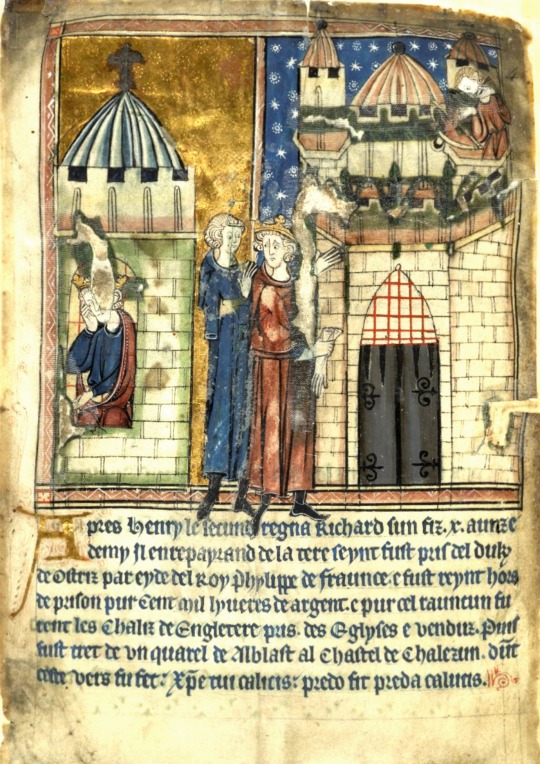
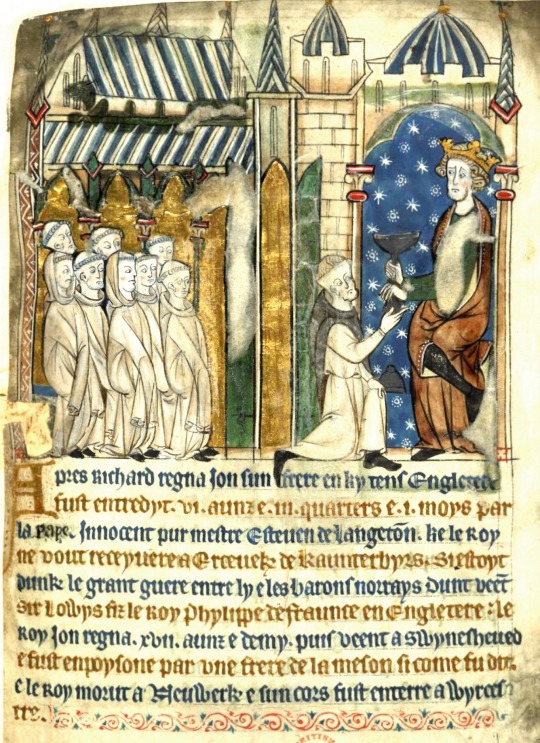


Pages from a 13th century manuscript with depictions of the kings of England from Edward the Confessor to Edward I, accompanied by brief summaries of their reigns, along with some highlighted stories.
Edward the Confessor receiving a divine apocalyptic vision from God during an Easter banquet.
Harold II being slain by William I at the Battle of Hastings.
William II, Henry I, Stephen, and Henry II are shown in simple poses with the dates of their lives and reigns.
Richard I first in his imprisonment in Austria, then his assassination at the hands of a boy with a crossbow.
John being poisoned by a monk at Swineshead Abbey (other accounts state that he dies of dysentery).
Henry III at his coronation, symbolically holding a miniature Westminster Abbey, which was lavishly rebuilt under his reign.
Edward I, then the current king, presiding over his court; the accompanying description was either lost or never completed.
#just stumbled on this and thought it was Neat#John does not like the look of that chalice#plantagenets#normans#anglo-saxons#manuscript
164 notes
·
View notes
Photo
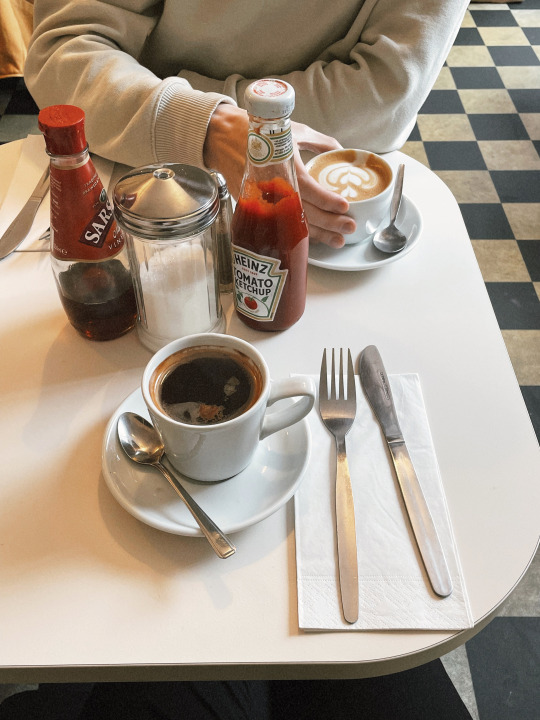
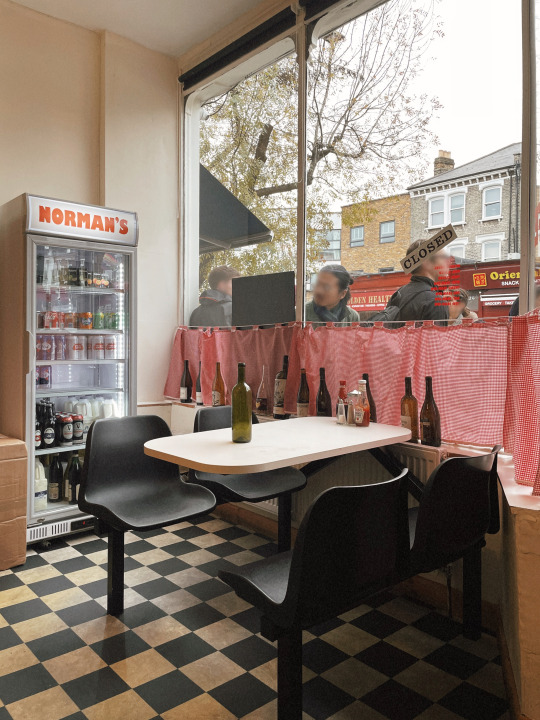
Missing the weekend already 🍅☎️❤️
#phone pics#aesthetic#food#drink#coffee#coffeeblr#cafe#caffs#normans#london#city#pretty city#weekend#diary#j#love#red#autumn
378 notes
·
View notes
Text

Making your way in the world today takes everything you’ve got. Taking a break from all your worries sure would help a lot. Wouldn’t you like to get away?
32 notes
·
View notes
Text
Clonmacnoise Monastery – Cluain Mhic Nóis | 'Meadow of the Sons of Nós'
This monastery is situated on the banks of the Shannon, it was founded in 544 AD by St Ciarán on a fertile meadow, or cluain, surrounded by bog. It could be reached only by river or along esker ridge known as the pilgrim’s road. The monastery flourished for 600 years as a centre of learning and religious instruction. It also supplied much of Ireland’s finest Celtic art and illuminated manuscripts…
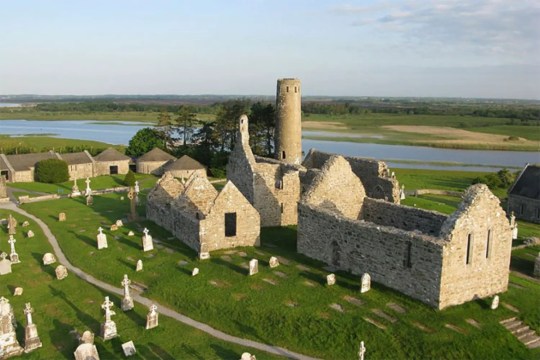
View On WordPress
#Clonmacnoise Crozier#Clonmacnoise monastery#Cluain Mhic Nóis#Dervorgilla#Diarmait Mac Murchada#Dublin#History#History of Ireland#Ireland#Irish#Irish History#Lebor na hUidre#Meadow of the Sons of Nós#National Museum#Normans#Shannon River#St Ciarán#Strongbow#The Book of the Dun Cow#Tiernan O&039;Rourke#Vikings
16 notes
·
View notes
Text

8 notes
·
View notes
Text

Bristol City Centre (Castle Park)
This image shows Castle Park (Image dated 1988) Once an area of medieval buildings and streets in the centre of Bristol which were blitzed in the 1940's during WWII and totally destroyed. This site is also the land on which the original Bristol Castle was built.
Bristol Castle was a Norman castle built for the defence of Bristol. Remains can be seen today in Castle Park near the Broadmead Shopping Centre, including the sally port. Built during the reign of William the Conqueror, and later owned by Robert FitzHamon, it later became an important royal castle and happened to be the scene of several imprisonments and executions. Several fortifications and additions to the castle were made between the 12th–13th century under Robert of Gloucester and King Henry III. It was mostly neglected by the 16th century and torn down in 1656 under orders from Oliver Cromwell. It was one of the largest Norman Castles ever built.
Now, as can be seen from this image it has become a recreational area for the city, with parklands, walks, and rest areas, retaining it's strong links with a troubled and historic past....
12 notes
·
View notes
Photo
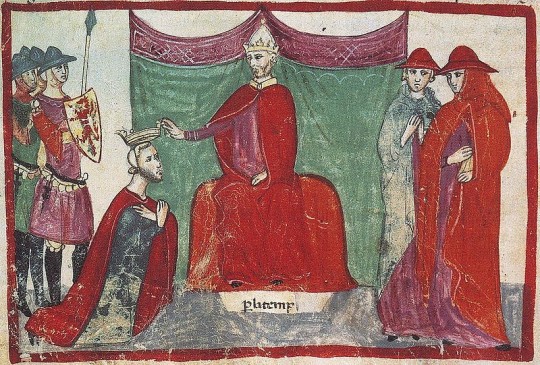
Battle of Civitate
The Battle of Civitate was fought in southeastern Italy on 18 June 1053 between a papal army of Pope Leo IX (r. 1049-1054) and an outnumbered force of Norman knights seeking recognition of their conquests and titles. The Normans were victorious, and 37 years after their arrival, the Norman conquest of Southern Italy could begin in earnest.
Continue reading...
23 notes
·
View notes
Text

The Battle of Hastings by Pierre Joubert
1982 Au temps des Vikings - Les Normands de Guillaume le Bâtard (1982 Viking Age - William the Bastard's Normans)
#pierre joubert#art#william the conqueror#battle of hastings#normans#anglo saxons#norman#anglo saxon#vikings#viking age#england#normandy#viking#france#history#europe#european#medieval#middle ages#knights#knight#cavalry
53 notes
·
View notes
Photo
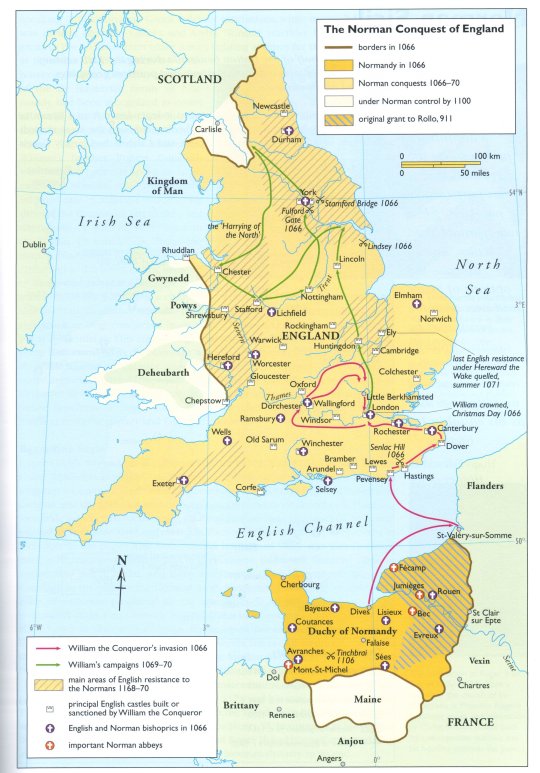
The Norman Conquest of England 1066
88 notes
·
View notes
Text
I think about this stuff a lot because I am a huge dork; fellow huge dorks, what do you think?
(I did a post some years ago going over some of the implications of each of these almost-kings reaching the throne.)
159 notes
·
View notes
Note
Do you consider the Battle of Stamford Bridge and the death of Harald Hard-Ruler to be the end of the Viking age?
That's a tough question, because it really comes down to whether you view the Normans as being in historical continuity with their Vikinger ancestors (and for how long) - after all, the Normans were running around conquering southern Italy and Sicily and Malta and Cyprus and big chunks of North Africa and the Byzantine Empire and the Holy Land Levant for hundreds of years after Stamford Bridge.

But what I would say is that the death of Harold Hardrada at Stamford Bridge marked the end of an era in which England was part of a broader empire that stretched from Ireland to Sweden. As British history teachers have been boring their students to death for generations by saying, after 1066 England's orientation shifted from that Scandinavian world to its northeast to focusing on France and dreams of a continental empire of its own.
22 notes
·
View notes
Text
How hard can it really be to build the perfect castle? Here are some of the biggest innovations in castle building anyone interested in finding out needs to know.
#castle#motte-and-bailey#Normans#towers#moats#gatehouse#medieval history#middle ages#feudal France#ancient#history#ancient origins
30 notes
·
View notes
Text
#OTD in 1366 – The Statutes of Kilkenny are passed in an attempt to prevent Norman settlers becoming ‘more Irish than the Irish themselves’.
The Anglo-Irish parliament met in Kilkenny and produced a body of royal decrees that became known as the Statutes of Kilkenny. The statutes aimed to prevent English colonists living in Ireland from adopting Irish culture and mandated that the Irish conform to English customs before they could obtain certain social, legal, and religious rights.
In particular, the statutes prohibited marriage…
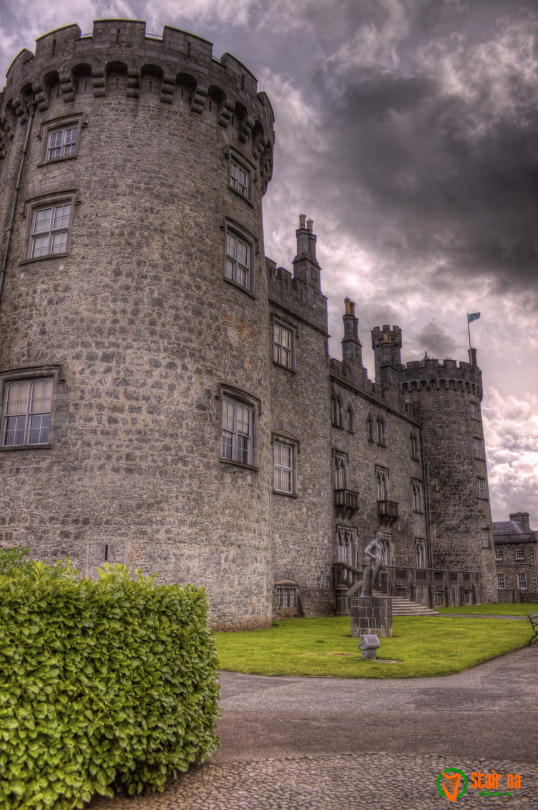
View On WordPress
#Anglo-Irish parliament#Diarmait Mac Murchada#England#England Occupation#Ireland#Kilkenny#Kilkenny Castle#Normans#Royal Decrees#The Statutes of Kilkenny
8 notes
·
View notes
Text
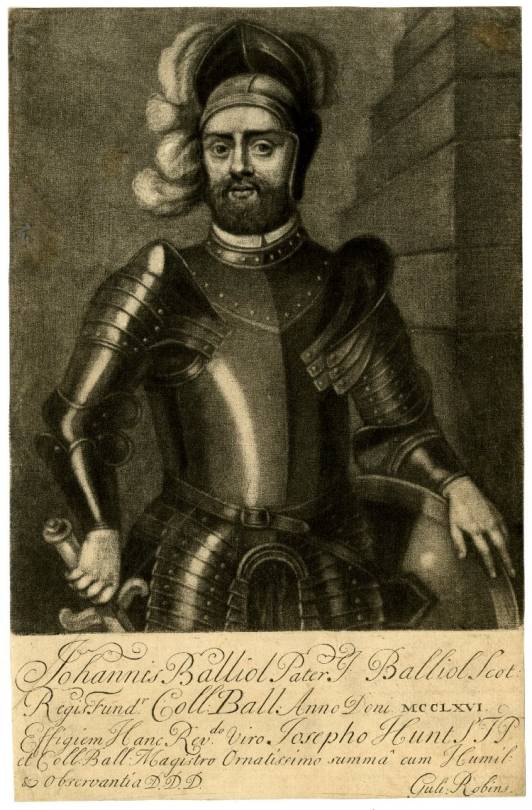
25th October 1268 saw the death of Sir John I de Balliol.
John de Balliol was born circa 1208 to Hugh de Balliol, Lord of Balliol and of Barnard Castle and Gainford and Cecily de Fontaines, daughter of Alâeaume de Fontaines, chevalier, seigneur of Fontaines and Longprâe-les-Corps-Saints. It is believed that he was educated at Durham School in the city of Durham.
In 1223, Lord John married Dervorguilla of Galloway, the daughter of Alan, Lord of Galloway and Margaret of Huntingdon. By the mid-thirteenth century, he and his wife had become very wealthy, principally as a result of inheritances from Dervorguilla's family. This wealth allowed Balliol to play a prominent public role, and, on Henry III of England’s instruction, he served as joint protector of the young king of Scots, Alexander III.
Although linked to the English Royal Court, Balliol was also a great-great-grandson of King David I, it was through this line that his son also called John, became King.
Following a dispute with the Bishop of Durham, John I de Balliol agreed to provide funds for scholars studying at Oxford. Support for a house of students began in around 1263; further endowments after his death, supervised by Dervorguilla, resulted in the establishment of Balliol College.
Sir John's own finances were less substantial than those of his wife, however, and long after his death it fell to Devorguilla to confirm the foundation, with the blessing of the same Bishop as well as the University hierarchy. She established a permanent endowment for the College in 1282, as well as its first formal Statutes.
The college still retains the name Balliol College, where the history students' society is called the Devorguilla society and an annual seminar series featuring women in academia is called the Dervorguilla Seminar Series.
When Sir John died in 1269, his widow, Dervorguilla, had his heart embalmed and kept in a casket of ivory bound with silver. The casket travelled with her for the rest of her life. In memory of her husband Devorguilla founded a Cistercian Abbey 7 miles south of Dumfries in South West Scotland, in April 1273.
The New Abbey, is also known as Abbey of Dulce Cor, but is better known today as Sweetheart Abbey, Dulce Cor being Latin for Sweetheart. Husband and wife are both buried at the Abbey.
The portrait of Balliol is a depiction from the 18th century
7 notes
·
View notes